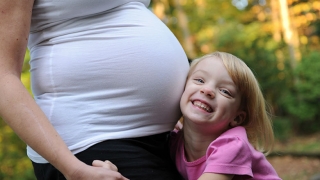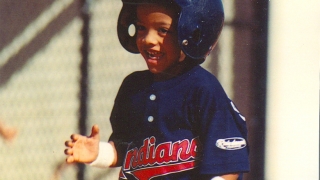Fetal Lung Lesions
What are fetal lung lesions?
Fetal lung lesions are congenital abnormalities that form on the lungs during fetal development. These lesions take the form of tumors or masses. They are not inherited and are typically benign (non-cancerous). Another term that is broadly used to refer to congenital lung lesions is congenital pulmonary airway malformation (CPAM).
Lung lesions are typically not associated with other birth defects or chromosomal abnormalities, but if left untreated they can grow and cause complications or turn cancerous.
There are many different types of fetal lung anomalies. Fetal lung lesions may be misdiagnosed. Accurate diagnosis is important, as each condition has distinct differences that require unique treatment.
- Congenital cystic adenomatoid malformation (CCAM/CPAM): The most common type of fetal lung lesion is a congenital cystic adenomatoid malformation, also called CCAM. CCAM is also frequently referred to as a congenital pulmonary airway malformation (CPAM). A CCAM/CPAM is a benign mass made up of abnormal lung tissue that appears as a cyst or mass in the chest. The mass starts out as a group of cells that are supposed to grow into lung tissue, and for some reason, don’t develop properly. The mass does not function like normal lung tissue. A CCAM/CPAM can be either macrocystic (made up of one or many large cysts) or micocystic (made up of small cysts and appear more solid), and the mass can vary in size.
- Bronchopulmonary sequestration (BPS): Bronchopulmonary sequestration (BPS) is a rare birth defect in which an abnormal mass of nonfunctioning lung tissue forms during fetal development. A BPS is not connected to the airway and may either be located within the lung tissue (intralobar BPS) or outside the lung tissue (extralobar BPS). The characteristic feature of a BPS is that it gets its blood supply from an artery that comes directly off the aorta (the main artery in our body). Some BPS can grow quite large, taking up valuable space in the chest cavity and potentially pushing the heart and lungs out of place (pleural effusion).
- Hybrid lesions: A lung lesion that has features of both a CCAM and a BPS is called a hybrid lesion. In these cases, imaging studies will show an abnormal arterial blood vessel feeding the mass as well as cysts within the lesion.
- Pleural effusion: Pleural effusion is a condition in which excess fluid accumulates around the lungs. It is sometimes called fetal hydrothorax. This fluid build-up can be caused by poor pumping by the heart, or by inflammation or swelling, or by certain congenital lung lesions (i.e. large extralobar BPS).
- Congenital high airway obstruction syndrome (CHAOS): CHAOS results when there is an airway obstruction blocking your baby’s trachea (windpipe) or larynx. CHAOS is associated with a variety of conditions that can obstruct the trachea such as laryngeal atresia. CHAOS can result in large, overinflated lungs and dilated, stretched out airways. The enlarged lungs put pressure on the heart and make it work harder.
- Bronchial atresia: The bronchi are the airways that branch off the trachea and bring air into the lungs. The trachea first branches into the right and left main bronchi which go to the right and left lung. The main bronchi then continue to branch into more smaller and smaller bronchi. A bronchial atresia is a narrowed or completely blocked airway. It may occur anywhere along the branching bronchi. The effect of a bronchial atresia depends on where the blockage occurs. If the blockage occurs in a main bronchi, fluid can accumulate in the lung and the lung can get vey large. If the blockage occurs in a smaller distal bronchi it often will not cause symptoms in your baby.
- Bronchogenic cyst: In this abnormal development of the airway, a small bud or cyst forms, and does not branch into airways. The cyst may not cause any symptoms, but if it is large and in a certain place, it can cause pressure on the airway, the esophagus and sometimes even the heart.
- Esophageal Bronchus: This is an extremely rare congenital anomaly in which a part of the lungs communicate with the esophagus or the stomach. Esophageal bronchus is typically associated with lung lesions.
- Congenital lobar emphysema (CLE): A developmental abnormality of the lung, usually caused by a blockage (such as a bronchogenic cyst). The air in the lungs cannot escape, and the lungs become very large.
- Fibrosarcoma
Types of Fetal Lung Lesions
Evaluation and diagnosis of fetal lung lesions
Accurate diagnosis of the type of fetal lung lesion your baby has is extremely important so that our team can offer you the best treatment recommendations for your baby. Because these are rare lesions, early prenatal evaluation by an experienced team that cares for a high volume of babies with lung lesions is essential.
If you are referred to the Center for Fetal Diagnosis and Treatment for evaluation of a suspected fetal lung lesion, you will undergo a full-day comprehensive evaluation to confirm the diagnosis and allow our team to learn everything we can about your baby’s condition.
After you are referred to our center, you will speak with one of our fetal therapy nurse coordinators on the phone. They will discuss a plan for your evaluation at the center, including reviewing your history, any testing you may have had done and plan for your visit. They will also help you with all the logistics of your appointment, including helping to coordinate travel, lodging, timing, etc.
At the end of the evaluation, you and any family members will meet with our multidisciplinary team to go through each test, what the results mean, and outline the options for your pregnancy. Your team will include a nurse coordinator, a maternal-fetal medicine physician, and a pediatric and fetal surgeon. This team will follow you either with your doctor at home, or here with us at CHOP, or both.
Treatment for fetal lung lesions
Treatment for fetal lung lesions depends on the type and size of lung mass, as well as whether the condition is causing any serious health complications for mother or baby.
Most small lesions can be successfully treated with surgery after birth. The more rare larger lesions, ones that grow rapidly, or those that cause life-threatening complications may require fetal intervention or treatment immediately after delivery.
Our team will work with you to make a treatment plan that is best for you and your family. Contact us for more information and to schedule an evaluation.
Reviewed by N. Scott Adzick, MD, MMM, FACS, FAAP, Susan S. Spinner, MSN, RN, Lori J. Howell, DNP, MS, RN


















